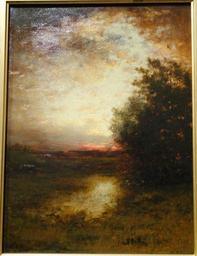Introduction
When it comes to photography, few techniques can draw out emotion and personality quite like the art of capturing light and shadow. This duality is not just a matter of exposure; it's about creating an https://ameblo.jp/innervista736/entry-12894450435.html atmosphere that tells a story, evokes feelings, and reveals the subject's true self. Whether you're diving into self-portrait photography, exploring faceless portraits, or honing your skills in fine art photography, understanding how to manipulate light and shadow can elevate your work to new heights. This article will delve deep into various techniques for achieving dramatic portraits, shedding light on aesthetic trends, artistic choices, and the emotional impact these images can have.
Capturing Light and Shadow: Techniques for Dramatic Portraits
In portrait photography, light is your most powerful tool. It shapes your subject’s features, defines their expressions, and sets the mood of the image. Shadow acts as a counterbalance, adding depth and dimension. When you master these elements, you're not just taking photos; you're creating visual stories.
The Importance of Light in Photography
Light plays a critical role in shaping our perception of a photograph. Understanding its qualities—intensity, direction, color temperature—can help you create more compelling images.
Types of Natural Light
Golden Hour: The hour after sunrise and before sunset provides soft, warm lighting that enhances skin tones. Overcast Days: Clouds diffuse sunlight, creating soft shadows that are flattering for portraits. Backlighting: Positioning your subject with the sun behind them can create striking silhouettes or halo effects.Artificial Lighting Techniques
Using artificial lights allows photographers to have more control over their subjects:
- Softboxes: These diffuse light sources reduce harsh shadows. Reflectors: They bounce light back onto your subject for even illumination. Flash: A well-timed flash can freeze motion while adding an extra layer of light.
Understanding Shadows in Portrait Photography
Shadows often reveal as much about a person as the light itself does. They can create intrigue or soften features:
Hard Shadows: Create drama but can also be unflattering if mismanaged. Soft Shadows: Provide subtlety and elegance to a portrait.Techniques for Creating Dramatic Effects
Chiaroscuro Technique
Chiaroscuro is an artistic technique that contrasts light and dark to achieve a three-dimensional effect. Originating from classical painting methods, this approach can dramatically enhance your portraits by emphasizing contours and textures.
Rembrandt Lighting
Named after the famous painter Rembrandt van Rijn, this technique uses one key light source positioned at an angle to create a triangle of light on the subject’s cheek opposite the light source.
Split Lighting
This method involves illuminating only half of the face while leaving the other half in shadow, creating an intense look that emphasizes shape and form.


Exploring Portrait Styles
The style of portrait you choose significantly influences how your work is perceived:
Self-Portrait Photography
Self-portraits allow artists to explore identity in art deeply. By manipulating lighting and shadow in self-portraits, you’re able to convey emotions that might be difficult to express otherwise.
Abstract Portraits
Abstract portraits strip away traditional representation in favor of forms that evoke feeling rather than specific likenesses. Here’s where creative lighting becomes essential—using unusual angles or shadows can transform ordinary scenes into captivating visual art.
The Role of Color Palette in Dramatic Portraits
Color has an emotional resonance that shouldn’t be overlooked when aiming for dramatic effects:
- Monochrome schemes (black & white) emphasize contrast between light and shadow. Vibrant color compositions add layers of meaning—think bold reds for passion or cool blues for calmness.
Emotional Reflection in Art through Light Play
Capturing moments through emotional expression requires intent with lighting choices. Here’s how different setups communicate feelings:
Low-Key Lighting: Creates somber moods perfect for contemplative photography. High-Key Lighting: Brightens scenes yielding cheerful vibes suitable for joyful expressions.Integrating Artistic Choices into Interior Design
Your photography doesn’t just live on digital screens; it can enhance home aesthetics too! Using wall art photography as decor transforms everyday spaces into galleries filled with personal narratives captured through your lens.
Creative Display Techniques
Consider these options:
- Framed photography adds elegance while showcasing artistic wall hangings. Gallery wall inspiration encourages eclectic art collections conveying personality through diverse styles.
Thought-Provoking Imagery
The beauty of capturing moments lies in their ability to provoke thought within viewers:
- How does this image make you feel? What story do you think it tells?
Engaging viewers with these questions invites deeper reflection on identity in art through visual storytelling.
Home Decor Ideas Featuring Art Photography
Incorporating photographic artwork into home design serves both aesthetic purposes while presenting opportunities for self-expression:
Large canvases become focal points in minimalist decor settings. Decorative art prints harmonize with nature-inspired themes providing balance throughout spaces.FAQs About Capturing Light and Shadow in Portraits
What is chiaroscuro?- Chiaroscuro is an art technique used to create strong contrasts between light and dark areas within imagery enhancing three-dimensional effects.
- Natural lighting relies on sunlight's varying qualities throughout day cycles while artificial lighting gives photographers consistent control over brightness levels irrespective of external conditions.
- Common styles include self-portrait photography focusing on identity exploration or abstract portraits emphasizing emotion over exact likenesses which evoke unique viewer responses.
- Bold hues evoke strong emotions whereas monochrome schemes emphasize contrast making them ideal choices depending upon desired visual impact!
- Absolutely! Shadows enhance depth/shape transforming ordinary images into extraordinary ones when applied thoughtfully!
- Utilize framed pieces as stylish wall decor arrangements or opt for large canvases serving as conversation starters reflecting personal stories captured through your lens!
Conclusion
The journey towards mastering dramatic portrait photography hinges primarily upon understanding how to manipulate both light and shadow effectively! As we've explored throughout this article—from essential techniques such as chiaroscuro to integrating imagery within home aesthetics—the possibilities are endless when it comes down capturing meaningful moments artistically! So grab your camera gear today; experiment boldly without fear knowing every shot brings you closer towards honing newfound skills whilst establishing unique visual narratives worth sharing far beyond any frame!